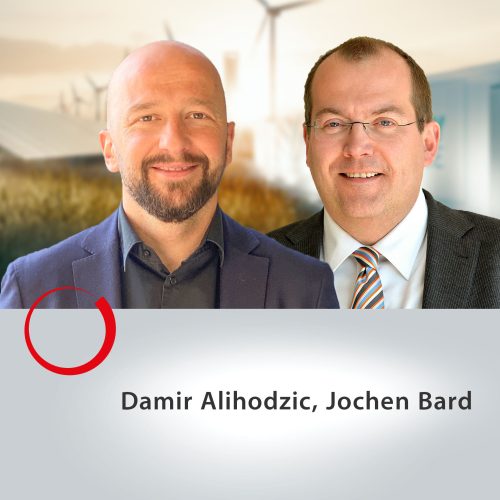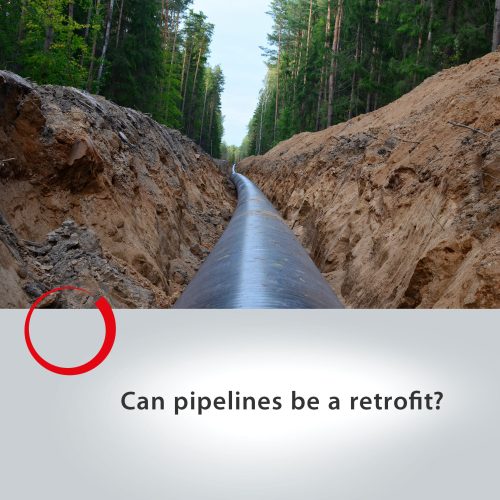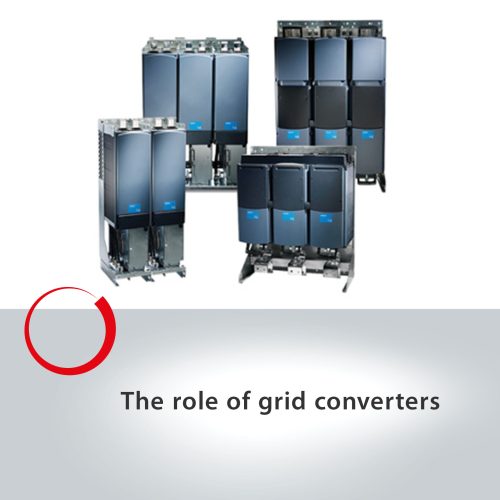Energy crisis - incentive for more efficiency?
Import and produce green hydrogen
Episode 3/4
Energy supply strategy: It's not about European autarky

Jochen Bard from the Fraunhofer Institute for Energy Economics and Energy System Technology IEE has just returned from North Africa. The first projects for supplying Europe with green hydrogen are being developed there with German funding. They are part of the European and German energy supply strategy. Because in the future – and Bard agrees with the German Federal Minister for Economic Affairs Robert Habeck on this – it will be a matter of diversifying energy imports. He does not see European energy self-sufficiency in green hydrogen coming. "It is certainly the case that we will only be able to produce the smaller part of the hydrogen demand in Germany in the future. And that’s where the topic of offshore wind plays a decisive role," explains Bard.
The Fraunhofer researchers are certain that Europe, and Germany in particular, will import green hydrogen and products derived from it in the long term. Various regions of the world can be considered as suppliers. "Besides North Africa, which is "on our doorstep," there are regions, such as South America, where there are excellent wind conditions to produce green hydrogen. In countries like Argentina, we are already trying to develop projects," reports Bard.
Listen now to Episode 16 of Torque – The Drive Podcast to hear what Jochen Bard has to share from his travels. In a conversation with Danfoss expert Damir Alihodzic, he discusses the future of green hydrogen in Europe.
Imports need infrastructure
Ammonia is currently considered the most competitive hydrogen derivative. It is quite easily delivered by tanker and terminal. "The reality is that an LNG terminal can be converted to import ammonia with some technical effort. Both need very similar technical requirements. But if we are now talking about liquid hydrogen, for example, we have completely different temperatures and therefore completely different requirements for the materials. I would put a very big question mark behind whether that is possible." Moreover, Bard does not see much potential for importing liquid hydrogen. He sees products such as ammonia or methanol arriving by ship in particular.

One option is to transport gaseous hydrogen in existing gas pipelines. "There, too, of course, technical adjustments and retrofits are necessary." Bard points out: "The gas network is not completely uniform, but has grown over decades. For example, different types of steel have been used. Some are more suitable for transporting hydrogen, others less so. As a result, there are numerous different technical measures that can be taken to make the pipeline network fit for hydrogen transport. In addition, we will of course have to purchase new equipment for the other active components, i.e., regulators and compressors, which are also very important for gas transport. On the plus side, we don’t have to replace much of the existing piping, but may only have to upgrade it – for example, with a new inner coating and the like. There are many different technical solutions. What is then necessary in each individual case depends on the actual conditions of the respective pipeline on site."
Green hydrogen: one for all?
Is hydrogen now the savior for everything? "As a general rule, everything that can be electrified in a sensible way should be electrified. This is always the more efficient and then cheaper way. Efficient electrification brings solutions with lower resource requirements and also with less need for renewable energies. But there are also areas that cannot (yet) be electrified. Long-haul flights, for example, or shipping across the world’s oceans. That can only be done with liquid energy sources – i.e. fuels. And there are also many chemical processes that require hydrogen or its derivatives. In steel production or iron ore production, for example, hydrogen can be used as an energy carrier to replace coal. That’s currently the most interesting solution for decarbonizing these industries."
"In summary, this means that there are a wide variety of industrial processes in which the use of green hydrogen can be of great importance in the future. But there are just as many industries in which the use of hydrogen does not make sense. In my opinion, this also applies to the building sector. Using green hydrogen to heat buildings, for example, makes little sense in my opinion."
The role of the Grid Converter
Danfoss Drives also has technology ready for the production of green hydrogen. Damir Alihodzic manages the issue for Danfoss Drives in Central Europe. Europe already produces and consumes over 70 million tons of hydrogen annually. The trend is upward. "However, this hydrogen is not green at all. If we are serious about the energy transition and decarbonization, many times more will be required. That means we have to think strategically in different directions. Even if we manage to build a European hydrogen economy, we will still have to import additional hydrogen," says the Danfoss expert. He and his team are helping the industry with its hydrogen strategy. Danfoss Drives supplies key components for electrolysis plants.
"We connect directly to the AC grid. The medium voltage is then converted to a low voltage. Our grid converters have a DC output. This is the interface for the electrolysers," adds the expert. Together with the Linde Engineering Team, the Danfoss Team is currently implementing the first projects. "We’re delivering four megawatts of electrolysis power in this project and testing and learning how the system performs." In the podcast interview, he explains where he sees future application scenarios, what role decentralized energy supply systems play, and whether a water-cooled or air-cooled system is the better option.

Energy crisis - incentive for more efficiency?
All episodes of the podcast season at a glance
In the podcast season "Energy crisis – incentive for more efficiency?" we go on an energy journey – from green hydrogen to storage technologies and DC supply in industry. We have invited many energy experts for this. They explain how the industry must position itself technologically for the next few years and what should be done in terms of energy policy.
In episode 1/4 of the season, listen to podcast host Robert Weber. He wonders how we could have slid into the current situation – when technologies and also political incentives for more energy efficiency and the use of green energy have been available for a long time. In the process, he lets guests from the previous podcast episodes have their say again on the topic of energy and innovation.
Episode 2/4 of this podcast season welcomes Sebastian Weckmann, Head of the Industrial Energy Systems Department at Fraunhofer IPA, and Helge Vandel Jensen, Director Business Development Electrification at Danfoss Drives, who are absolute experts in new ways of industrial energy supply. What energy sources can we use in the future? How quickly will the energy supply transformation succeed? What can industrial companies do now? Episode 2/4 provides answers to this.
Last but not least, the season finale with Egon Schubert from Innofas and Reiner Kaiser from Danfoss Drives offers a very good and deep insight into the world of decentralized energy storage technology. What about the stability of our power grid? What can storage facilities contribute here? How and, above all, how quickly can companies integrate decentralized storage? That’s what host Robert Weber discusses with his guests in this episode.
You like Torque – The Drive Podcast? Then subscribe to it on Spotify or Apple Podcasts.
